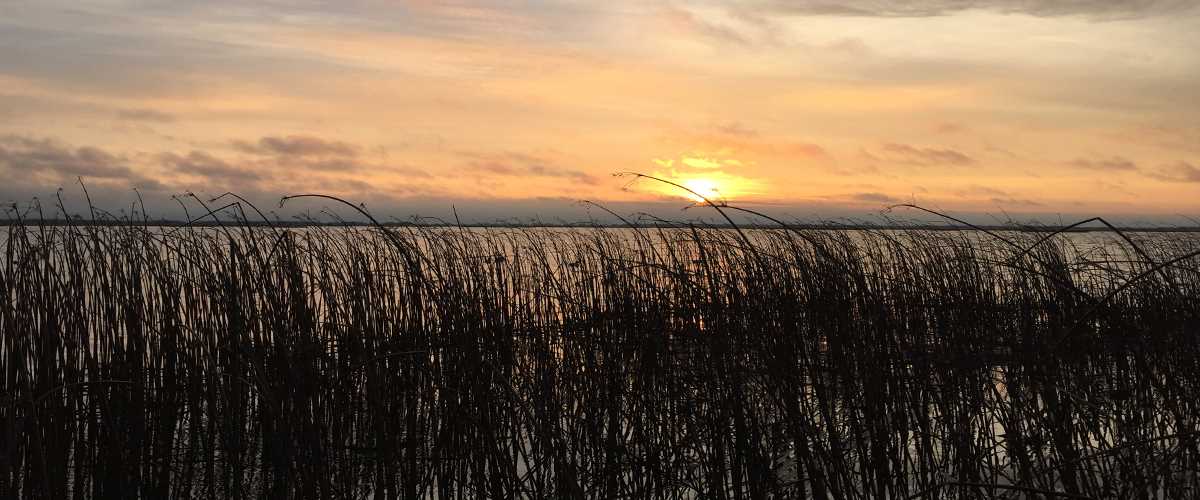Preserving habitat for many generations of wildlife, sportsmen, and ranchers alike

In special cases, where intact waterfowl habitat is at imminent risk but the landowner is not willing to consider an easement and wants to sell, Ducks Unlimited may seek to acquire the property. Once purchased, grasslands and wetlands are restored and conservation easements are placed on the land so as to perpetually protect important resource values. During the period of DU's ownership, the public is welcome to hunt and enjoy the properties.
When restoration is complete and easements are in place, the land is typically re-sold to a wildlife agency or a private individual who shares DU's interest in protecting the prairie's natural values. Previous buyers have included agencies who wanted the land for a state or federal wildlife area, ranchers who needed pasture and were willing to abide by the terms of the easement, and individuals who were interested in the land primarily for its conservation or recreational values. Funds recovered through the subsequent sale of land are deposited in a revolving fund, which can be tapped for new acquisitions.
One special tract of land will remain under DU ownership for long-term management and research purposes: DU's flagship property, the 9,455-acre Goebel Ranch in South Dakota. Straddling the McPherson-Edmunds County line and located in the heart of the Missouri Coteau, this property is a breeding waterfowl's paradise. Nearly one thousand wetlands on the Goebel Ranch, surrounded by grasslands stretching from horizon to horizon, welcome migrating waterfowl as they make their return trip to the breeding grounds each spring.
DU has conducted fall banding operations for the past four years to help understand where some of the ducks raised on the Goebel Ranch (map) are spending their winters, and what routes they are taking to get there. Hunter recoveries from ducks banded at the Goebel Ranch indicate birds were harvested in all four flyways, 23 states, and five Central and South American countries. The data retrieved from this banding effort exemplifies the national and international importance to waterfowl of the Goebel Ranch and all of the remaining prairie grasslands in the Dakotas. Goebel Duck Banding totals (02-05).pdf
DU manages these acres with a balanced approach of rotational grazing, haying, season-long idling of the land, and prescribed burning. The over two dozen local ranchers who rent DU-owned land follow DU's management guidelines to ensure that healthy and favorable habitat conditions exist for both waterfowl and livestock production. In a typical year, only about 15 percent of DU lands managed by grazing livestock are being impacted at any given time throughout the growing season. Additionally, less than 50 percent of the managed rangelands are grazed during the duck-nesting season from April through July, and any haying activities are not conducted until late July or August.
Resting, or idling, of land is also a beneficial practice used to manage grassland acres. Nearly 15 percent of all grazing lands and over 60 percent of all haylands managed by DU remain idle each year. Resting land promotes a healthy ecosystem by allowing the flora and fauna to complete an entire annual cycle without any major disturbance. However, allowing grasslands to remain idle for a prolonged period of time actually contributes to a decline in the health and productivity of these diverse communities. Ducks and other plant and animal species evolved with habitat disturbance on the prairie, be it from immense herds of nomadic grazing bison, or from wildfires that raced across the vast prairie grasslands. These natural disturbances rejuvenated grasslands and helped maintain the health and balance of the prairie ecosystem.
Prescribed burns are another land management option DU has chosen to use to improve and maintain many acres of native grasslands in DU ownership. Generally, about three prescribed fires affecting no more than 640 total acres are conducted a year on DU properties.
The purchase, management, and protection of critical waterfowl breeding habitat and the eventual sale of these properties is just one of the promising methods DU is employing to help ensure some of the best remaining prairie grasslands, that are so critical for waterfowl and beef production, are preserved for many generations of wildlife, sportsmen, and ranchers alike.
Ducks Unlimited uses cookies to enhance your browsing experience, optimize site functionality, analyze traffic, and deliver personalized advertising through third parties. By continuing to use this site, you agree to our use of cookies. View Privacy Policy